How Bosnia and Herzegovina became independent
The war in multinational Bosnia and Herzegovina has its roots back centuries. The origins of ethnic conflicts on the territory of this country should be sought in the peculiarities of the historical development of this Balkan region. For several centuries, from the XV to the XIX centuries, Bosnia and Herzegovina were part of the Ottoman Empire. During this time, a significant part of the local Slavic population was Islamized. First of all, Islamists were subjected to Bogomils, who did not belong to either the Orthodox or the Catholic churches. Islam was voluntarily accepted by many representatives of the nobility who were guided by the possibility of a career and the preservation of privileges. By the middle of the XVI century. In Bosnian Sandjak, the 38,7% population consisted of Muslims. In 1878, Bosnia and Herzegovina received the status of autonomy in accordance with the San Stefano peace between the Russian and Ottoman empires. However, in the same year, the territory of Bosnia and Herzegovina, which formally remained under Ottoman jurisdiction, was occupied by Austro-Hungarian troops. The Austro-Hungarian authorities changed the priorities of the national policy - if the Ottoman Empire patronized Bosnian Muslims, Austria-Hungary provided privileges for the Catholic (Croatian) population of Bosnia and Herzegovina. The most disadvantaged Serbian Orthodox population of Bosnia and Herzegovina hoped for reunification with Serbia. This goal was pursued by Bosnian Serb nationalists, one of whose representatives was Gavrilo Princip and killed 28 June 1914, the Archduke Franz Ferdinand.
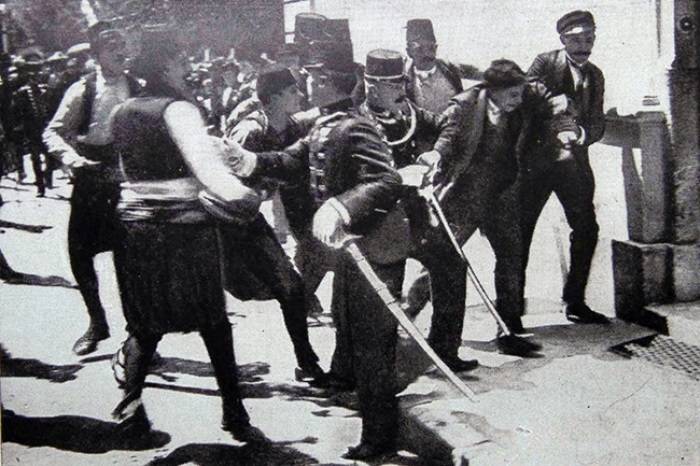
After the end of World War I and the collapse of Austria-Hungary, 29 on October 1918, the creation of the State of Slovenes, Croats and Serbs was proclaimed on the Yugoslav lands, which were previously controlled by Austria-Hungary. Soon, 1 December 1918, the State merged with Serbia and with Montenegro into the Kingdom of Serbs, Croats and Slovenes (later Yugoslavia). So began story Bosnia and Herzegovina as part of the common Yugoslav state. However, after the outbreak of the Second World War, the territory of Bosnia and Herzegovina was incorporated into the Independent State of Croatia, created by Croatian nationalists, the Ustashes, under the direct patronage of Nazi Germany. The Third Reich sought to oppose the Catholic and Muslim population of the Balkans to the Orthodox population. In Bosnia and Herzegovina, emphasis was placed on Croats and Bosnian Muslims. Of the latter, the 13-i Mountain Division SS "Khanjar" was formed. Over 60% of its personnel were Bosnian Muslims, the rest were Croats and Germans. The division "Khnadzhar", despite its multiplicity (21 000 military), more famous in the massacres of civilians - Serbs, Jews, Gypsies than in hostilities. It is noteworthy that back in 1941, the Bosnian Muslim clergy adopted a resolution condemning the calls for violence and violence against the Orthodox and Jewish population. However, the Nazis, using the authority of the famous Palestinian mufti Amin al-Husseini, who worked closely with the Third Reich, could influence the mood of many young Bosnian Muslims and the latter, rejecting admonitions by traditional leaders, joined the SS division.
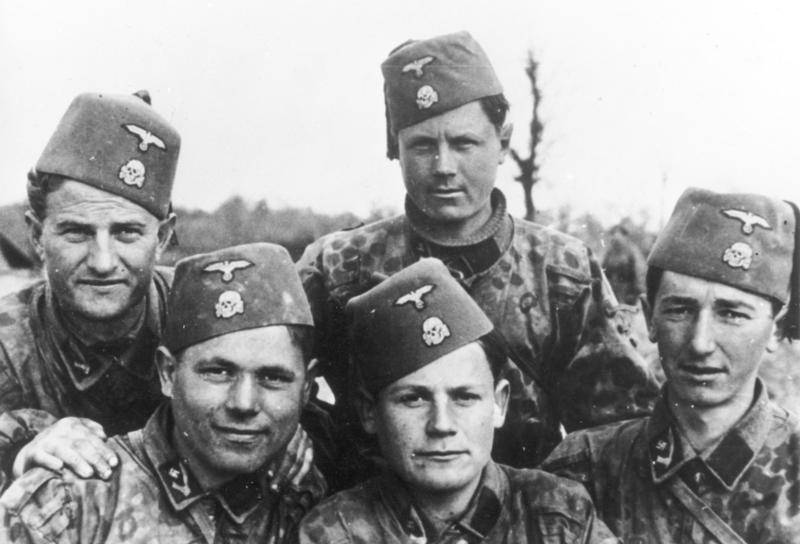
The atrocities committed by the SS from the Khanjar division remained in the memory of the Serbian population of Bosnia and Herzegovina. There is a black line between the various ethno-confessional groups of the region. Of course, there were interethnic conflicts before, there were contradictions and clashes, but the policy of targeted genocide of the Serbian population by the same Slavs who professed other religions was tested during the Second World War. After the end of World War II, Bosnia and Herzegovina joined the union state as an autonomous republic. The policy pursued by the socialist authorities of Yugoslavia was aimed at eliminating the traditional image of the social organization of Bosnian Muslims. Thus, in 1946, Sharia courts were liquidated, in 1950, the wearing of the veil and burqa was prohibited by law - under the threat of serious sanctions in the form of fines and placement in custody. Naturally, these measures could not have been to the liking of many Bosnian Muslims. However, in 1961, Bosnian Muslims were officially granted the status of a nation - "Bosniaks". Josip Tito, who tried to strengthen the union state, sought to create equal conditions for all titular peoples of Yugoslavia. In particular, in Bosnia and Herzegovina, the principle of equal appointment of representatives of all three main nations of the republic to the positions of public service was observed. The entire second half of the twentieth century. in Bosnia and Herzegovina, the process of reducing the proportion of the Orthodox and the Catholic population. While 1961% Orthodox, 42,89% Muslims and 25,69% Catholics lived in the republic in 21,71, then in 1981, Muslims were among the three main ethnic and religious groups of the republic and 39,52%, while Catholics 32,02% . In 18,38, Bosnia and Herzegovina was inhabited by 1991% Muslims, 43,5% Orthodox and 31,2% Catholics.
However, centrifugal processes in the SFRY at the turn of the 1980-xNXX-x. affected, of course, and Bosnia and Herzegovina. Given the multi-confessional composition of the population of the republic, its separation from Yugoslavia could have the most tragic consequences. However, opposition forces pursued their own interests. The differentiation of the political space of Bosnia and Herzegovina has begun, and not by ideological, but by ethno-confessional signs. The Muslim Action Party for Muslims was created, headed by Aliya Izetbegovic (1990-1925) - a native of a poor Muslim aristocratic family, a prominent figure in the religious and political movement of Bosnian Muslims.
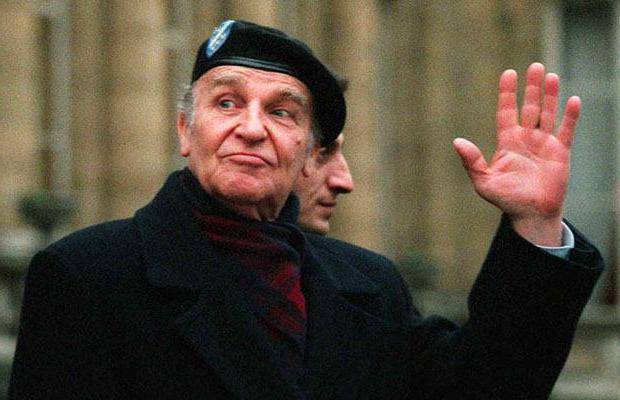
Back in 1940, young Aliya joined the Young Muslims organization. Subsequently, opponents accused him that during the war years he recruited young people to join the ranks of the SS division "Hnadzhar." In 1946, Izetbegovic received the first three-year term of imprisonment for religious propaganda while serving in the Yugoslav army. However, socialist Yugoslavia was a very mild state. Mr. Izetbegovic was tried and served three years of imprisonment and was allowed to enter Sarajevo University in 1949, and at the Faculty of Law, and was quietly finished in 1956. Further Izetbegovic worked as a legal adviser, but he continued to engage in religious and political activities. In 1970, he published the famous "Islamic Declaration", for which he received a very serious time - 14 years in prison. Such a serious leader was among the Bosnian Muslims. Naturally, Izetbegovic broadcast his radical attitudes on Wednesday among the Bosniaks, and they were perceived, first of all, by young people who were dissatisfied with the numerous social and economic problems of the republic, who hoped that creating their own state would immediately improve their situation.
Strengthening the position of Izetbegovic and his party was associated with the growth of religious fundamentalism in Bosnia and Herzegovina. Back in 1960 - 1970 - s. SFRY began to develop contacts with Arab countries, which contributed to the gradual cultural influence of the Arab world on the Bosnian youth. The radical organizations of the Arab world considered the Bosnian Muslims as their outpost in the Balkans, therefore, even during the existence of the Socialist Federal Republic, contacts between Bosnian Islamists and their like-minded people in the countries of the Arab East grew stronger and stronger.
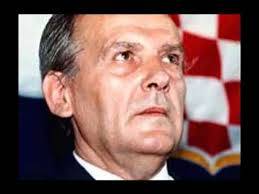
After the advent of the Party of Democratic Action, political organizations of Catholics and Orthodox were created. The party “Croatian Democratic Union” was led by Mate Boban (1940-1997, in the photo). Unlike Izetbegovic, in his youth he was not an open opponent of power and, moreover, he was even a member of the Union of Communists of Yugoslavia, but after the restoration of a multi-party system in the country, he headed the right-wing Croatian democratic community. At the same time, the Serbian Democratic Party appeared, led by psychiatrist Radovan Karadzic (born 1945).
In addition to the nationalists, the Union of Communists of Yugoslavia continued to operate in Bosnia and Herzegovina by 1990, as well as the secession of the Union of Reforming Forces, which advocated the preservation of the union state, subject to democratic reforms. However, the Communists lost the support of the population, and the reformers could not find it. In the elections to the Assembly of Bosnia and Herzegovina in 1990, only 9% of voters voted for the communists, and even less for the reformers - 5% of voters. Most of the seats in the Assembly went to nationalist parties that expressed the interests of the three main ethno-confessional communities of the republic. Meanwhile, at the strategic level, there were obvious differences between Bosnian Muslim and Croatian nationalists on the one hand, and Serb nationalists on the other.
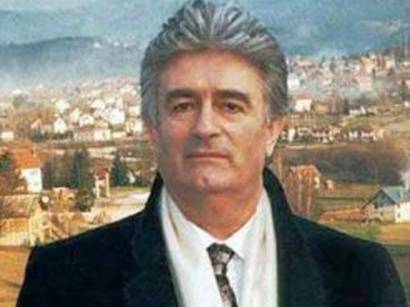 The Serbian Democratic Party of Radovan Karadzic (pictured) proclaimed the creation of a unified state of the Serbian people as its main goal. Considering the separatist tendencies that won in Slovenia and Croatia, the SDP adhered to the concept of “Minor Yugoslavia”. Slovenia and Croatia should have left the SFRY without Serbian territories. Thus, Serbia, Montenegro, Bosnia and Herzegovina, Macedonia, and Serbian districts of Croatia remained in a single state. Therefore, the Serbian Democratic Party was categorically against the withdrawal of Bosnia and Herzegovina from Yugoslavia. In the event that Bosnia and Herzegovina nevertheless withdrew from Yugoslavia, the Serbian territories of BiH were to remain as part of the Yugoslav state. That is, the republic was supposed to cease to exist within its former borders and isolate the territories inhabited by Bosnian Serbs from among its members.
The Serbian Democratic Party of Radovan Karadzic (pictured) proclaimed the creation of a unified state of the Serbian people as its main goal. Considering the separatist tendencies that won in Slovenia and Croatia, the SDP adhered to the concept of “Minor Yugoslavia”. Slovenia and Croatia should have left the SFRY without Serbian territories. Thus, Serbia, Montenegro, Bosnia and Herzegovina, Macedonia, and Serbian districts of Croatia remained in a single state. Therefore, the Serbian Democratic Party was categorically against the withdrawal of Bosnia and Herzegovina from Yugoslavia. In the event that Bosnia and Herzegovina nevertheless withdrew from Yugoslavia, the Serbian territories of BiH were to remain as part of the Yugoslav state. That is, the republic was supposed to cease to exist within its former borders and isolate the territories inhabited by Bosnian Serbs from among its members. The Croatian side was counting on the accession of Croat-inhabited lands of Bosnia and Herzegovina to Croatia. The separatist sentiments of the Bosnian-Herzegovina Croats were stirred up by Croatian leader Franjo Tudjman, who planned to include their lands in independent Croatia. The Bosnian Muslims, who constituted the majority of the population of the republic, nevertheless, did not possess initially serious potential for independent action. They did not have the powerful support of their fellow tribesmen from other republics, like those of the Serbs and Croats. Therefore, Aliya Izetbegovic took a waiting position.
October 15 1991 The Assembly of the Socialist Republic of Bosnia and Herzegovina in Sarajevo voted for the sovereignty of the republic, despite the numerous objections of Serbian deputies. After that, the Serbs of Bosnia and Herzegovina declared a boycott of the parliament and on October 24 on 1991 convened a Assembly of the Serbian people. 9 November 1991 was held a referendum in the Serbian regions of the republic, in which 92% voted for the Serbs of Bosnia and Herzegovina to remain in a single state with Serbia, Montenegro and the Serbian territories of Croatia. 18 November 1991 The Croats proclaimed the creation of the Croatian Commonwealth Herceg-Bosna as a separate unit within Bosnia and Herzegovina. At about the same time, the Croatian Democratic Union, whose leaders already understood how events would develop in the future, began to form their own armed detachments.
9 January 1992. The Assembly of the Serbian people proclaimed the establishment of the Republika Srpska. It was announced that it would include all Serbian autonomous regions and other communities, as well as regions in which the Serbian people were in the minority because of the genocide against them during the Second World War. Thus, the Republika Srpska had intended to include in its composition and areas where by 1992, the majority of the population were already Muslims.
Meanwhile, February 29 - March 1 1992 was held in Bosnia and Herzegovina in another referendum - this time on the issue of state sovereignty. With a turnout of 63,4,% 99,7% of voters voted in favor of Bosnia and Herzegovina’s independence. Such a low turnout was due to the fact that the Serbs boycotted the referendum. That is, the decision on independence was taken by blocked Croats and Bosnian Muslims. 5 April 1992 was officially proclaimed the independence of Bosnia and Herzegovina. The very next day, 6 on April 1992, the political sovereignty of Bosnia and Herzegovina was recognized by the European Union. 7 April Bosnia and Herzegovina recognized the independent state of the United States. The response to the proclamation of independence of Bosnia and Herzegovina was the subsequent declaration of the independence of the Republika Srpska 7 on April 1992. The late Bosnian Croats declared the independence of Herceg-Bosna 3 on July 1992, when armed conflict was already raging in the republic.
Information